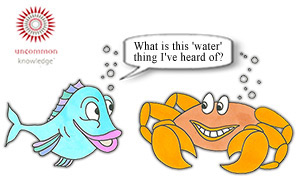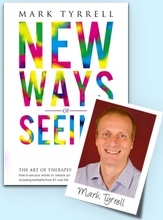
Hypnosis is so much a part of everyday life it can be hard to spot
Hypnosis is everywhere, but sometimes it’s hidden in plain sight.
I’ll show you two short clips of actual naturalistic trance happening (without any kind of induction) during therapy.
Many years ago, before I studied therapeutic hypnosis, I thought hypnosis was just something that happened when a stage performer clicked his fingers or a therapist prompted a client to “close your eyes and relax”.
Prefer to watch instead?
But then I started to see that hypnosis happens all the time and most commonly when people are scared, focussed, and emotional.
- Like at the doctor’s.
- During shock at the scene of an accident
- And in any therapy room.
This last point is important. Clients can be hypnotically conditioned during counselling or coaching and depending on the the way the practitioner communicates with their client.
This is why I encourage all therapists to learn about hypnosis, even if they aren’t planning on delivering hypnotherapy themselves.
Because hypnosis happens in all therapy anyway. So what do I mean?
3 typical examples of accidental hypnosis in therapy:
Hypnosis is natural. Therefore it happens naturally and sometimes spontaneously. For example, therapy clients can become focussed and locked onto imagery or feelings:
- When a word triggers a flashback or abreaction
- When a client can’t stop crying
- When a client is locked into the past perhaps by a line of questioning by the practitioner.
We’re going to take a look at each of these in turn. But first, I just want to run through a quick definition of hypnosis.
What is hypnosis?
At the heart of hypnosis lies the experience of dissociation. Whenever we focus very tightly on one thing, we, by necessity, defocus on other elements of reality.
In the deepest type of hypnotic trance there is – dreaming during sleep – we focus so completely on our internal imaginary dreamscapes that we almost completely dissociate from the bedroom, beach, or wherever we happen to be snoozing and dreaming (1).
All strong emotions lock attention, make people more suggestible, and cause dissociation to a lesser or greater extent. Strong emotions – especially fear – hypnotize people. This can and does happen in therapy. During this state people can learn very rapidly, however the learning isn’t cognitive it’s emotional.
Here’s what I mean.
Example 1: When a word triggers a flashback or abreaction
I’ve learned to tread carefully when discussing clients’ traumatic experiences, because abreactions and flashbacks are actually deep open-eye hypnotic states triggered by natural post-hypnotic suggestions. The trigger could be a word, a person, an object, or a situation that – as fast as the finger click of a stage hypnotist – hypnotically regresses the person back to the original trauma.
The original traumatic event sharply narrows the victim’s focus, tipping them into a highly suggestible state. In this state, their brain learns to associate fear with the event. Later, the smallest reminder of the traumatic situation triggers that same level of fear.
This is a hypnotic and not a cognitive type of learning, which is why getting someone to hypnotically ‘re-live’ a traumatic experience, once thought to be a suitable treatment that would discharge the trauma, has now been conclusively shown to make things worse (2).
If a therapist does get a client to directly re-live a terrible experience, then they are applying a negative hypnotic induction which may be very harmful.
So we should all be mindful that we don’t accidentally trigger fear in a therapy session. Because it’s not a good use of hypnosis, especially if the therapist doesn’t fully understand the hypnotic nature of trauma or how to safely use hypnotic techniques to lift it comfortably.
Example 2: When a client can’t stop crying
Shedding a few tears can be a release for a client, but this isn’t the same thing as not being able to stop crying.
Remember, accidental hypnosis is a triggering of a state of dissociation. During therapeutic hypnosis, we seek to deliberately engage the imagination, but this can also happen unintentionally when we become emotional.
Unless clients are purely in the ‘here and now’ while in the therapy room, focussed on the furnishings and so on, then they will naturally begin to split their awareness. The more powerfully they emote, the more suggestible they become within the limits of the type of trance they are in.
Of course, if we get clients to emote in positive ways and help them build up their emotional resources, then we are using trance for good!
But a chemo patient can feel nauseous just revisiting the place where they received treatment. In the course of their treatment, they will have built up an association between the building, the décor, and even the people and the highly unpleasant physical sensations that they endured there.
So just walking into the building – even if it has nothing to do with treatment – can set off a post-hypnotic trigger that re-evokes the experience.
Something similar can happen in therapy, especially where a therapist holds to the ideological view that clients need to ‘get in touch’ with lots of painful feelings during therapy.
Soon enough, just arriving in the therapy room can trigger the pattern match and just being there can make them feel upset. The ideology holds that this is ‘healthy’ and should be encouraged. And so it continues.
Example 3: When a client is locked in the past
Depression often causes an over-focus on the past, but also a biased view of that past. Depressing memories will be replayed readily, while more positive or neutral memories get forgotten or re-interpreted as having been actually depressing.
Memories draw us inward, dissociating us from the present. Someone could be in the shopping mall, hear a piece of music that takes them back twenty years, and momentarily forget the mall or the people around them (or the outrageous prices) and become deeply inwardly absorbed. They might even exhibit some classic trance indicators: glassy eyes, fixed stare, complete stillness of the body, and so on.
During that time, it would be relatively easy to induce deep hypnosis for such a person – because they have already begun the process naturally. Memory is as much a creative as a mechanical act of recall (3).
And that’s why excessive ‘exploring the past’ in therapy may mean that a depressed client is tranced out (and not necessarily in a good way) for whole sessions at a time. A client who lives too much in the past may need help coming out of that particular uncontrolled way of trancing out.
So what more subtle signs can you observe physically in your clients that indicates they might be naturally trancing out?
Physical indicators of natural trance states
Other than obviously being more focussed on inward experience than outer experience, as when a client cries or feels terrified of a memory that may have occurred years before, there are more subtle signs.
One is “fixed attentiveness” where the eyes become glassy and fixed and you may observe REM rapid eye movement, where the eyeballs twitch from side to side. This occurs when we dream at night but also during hypnosis.
When we ask a client a searching question we are inviting them to narrow their focus inward, which is the beginning of trance. This may happen time and time again in a counselling session.
Here’s an example of Kay, a client inside Uncommon Practitioners TV, exhibiting fixed attentiveness and also, if you observe carefully, opened-eyed rapid eye movement (REM):
You’ll notice Kay doesn’t blink. She loses contact with me for a few moments as she goes on an inner search – the first steps into deep hypnosis.
Below is a clip of Kay from the same session, where she is talking about painful memories from her past. You’ll notice as she does this she again starts to disassociate from the immediate external reality through extending her eye blinks. This happens to the extent that towards the end of the clip she is closing her eyes for quite extended periods.
For more technique demonstration videos, see Uncommon Practitioners TV
Sometimes you’ll see clients REMing during these extended eye blinks.
So, extended periods of glassy eyed fixation and/or extended eye blinks can both indicate the client is trancing out somewhat. All practitioners use (or accidentally misuse) hypnosis so it’s much better for all people-helpers to know about this natural but oh-so-powerful state of mind.
So the key takeaways here are:
5 key hypnosis facts to understand
- Hypnosis is a continuum. We can all be more or less hypnotized and the most deep hypnosis is usually the state of dreaming when we sleep.
- Hypnosis happens naturally, usually unrecognized, within all psychological problem states. The focus of mind needs to narrow and dissociate for the problem state to be ‘learned’ and later ‘post-hypnotically’ reactivated.
- Hypnotic learning tends to be unconscious. So the traumatized war veteran may not consciously expect to feel terrified at the sound of fireworks, but suddenly realizes that this is the response they learned during the original trauma. PTSD works just like a post hypnotic command or trigger.
- You can spot more subtle signs of spontaneous trance states in your clients by observing “fixed attentiveness” and/or extended blinking.
- When we are educated in the therapeutic and directed use of trance states we can use them to help our clients in all kinds of ways.
I’ve tried to give you a flavour here of how hypnosis happens whether we know it or not. The more therapists can come to really understand hypnosis, how it’s already operating, and how to actually harness this central human feature for the powerful and wonderful good it can bring, the more effectively we can help our clients.
Notes:
- For more information about the connection between dream sleep, the REM state, and hypnosis, see: Hypnosis, Dreaming, and REM.
- Spiegel, D, Detrick, D, and Frischholz, E.J. (1982). Hypnotizability and psychopathology. The American Journal of Psychiatry, 139, 431-437.
- Dr Noreen Tehrani, an occupational health and counselling psychologist specializing in posttraumatic stress, explains it like this: “If a trauma victim is debriefed in a state of high emotion, the process can increase the arousal to the point of overload, trapping the sensory impressions in the amygdala.”
- See: Can trauma really make you repress memories?










